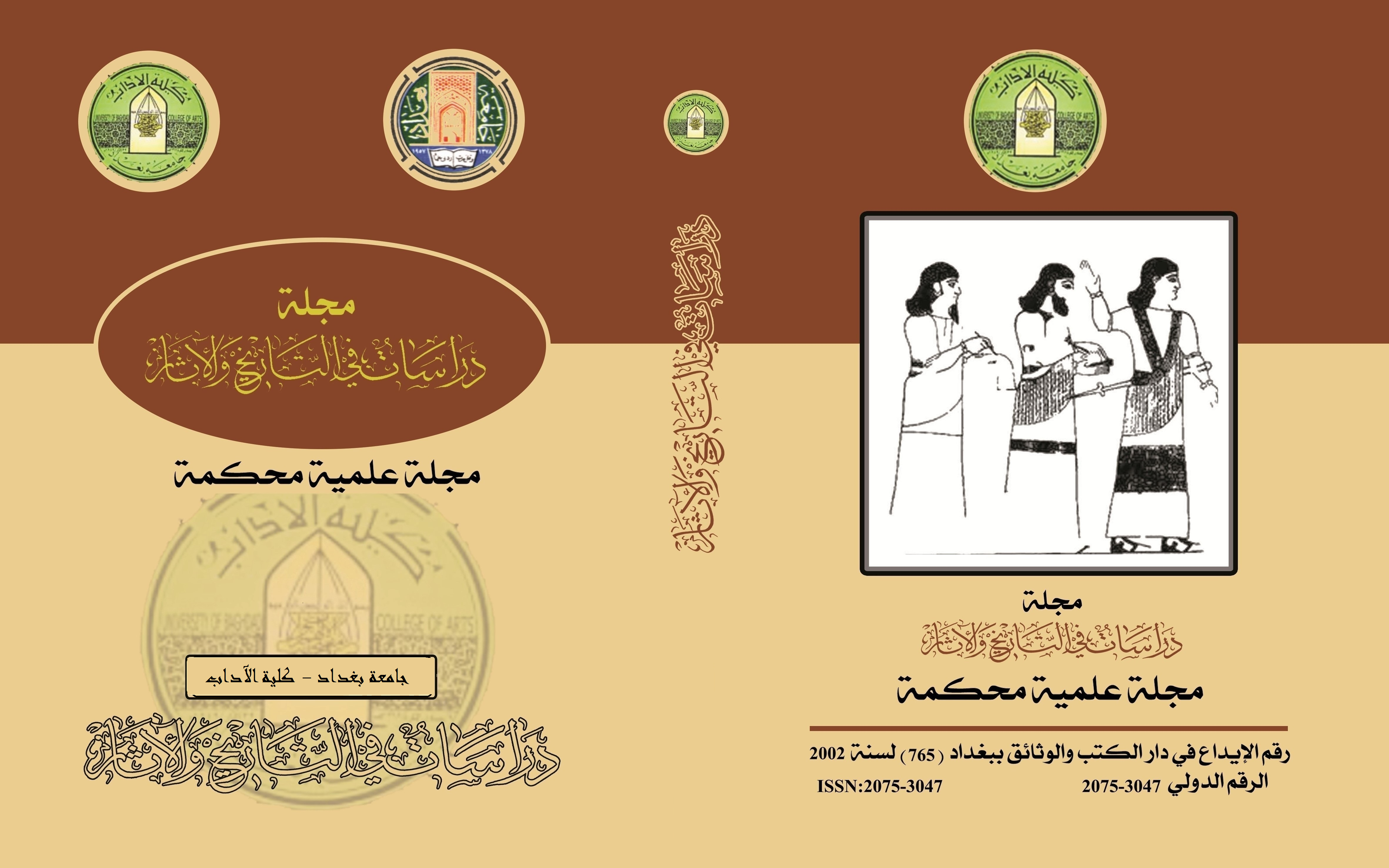Urbanization and nomadism, a study in the geography of cities / Anbar province as a model
الكلمات المفتاحية:
التحضر، البداوة، جغرافية المدنالملخص
في هذه الدراسة، تم اعتماد قاعدة حجم الرتبة، ومؤشر ميهتا، ومؤشر الأولوية أو مؤشر المدن الأربع، ونسبة الأولوية. ويهدف استخدام هذه الأدوات والمؤشرات إلى فهم التوزيع الحضري والهيمنة الحضرية في محافظة الأنبار بشكل أفضل وتقييمه بشكل أكثر شمولاً. بهدف تحليل السيطرة الحضرية في شبكة النظام الحضري في محافظة الانبار. تعد السيطرة الحضرية أحد التحديات الرئيسية التي تواجهها معظم النظم الحضرية في البلدان النامية. وقد تم اختيار حجم السكان كمؤشر لقياس السيطرة، على الرغم من الجدل الدائر حوله، لأنه يغفل جوانب أخرى مهمة من القياس، مثل الجوانب الاقتصادية والاجتماعية والسياسية وغيرها. قد تلعب المفردات المتعلقة بالهيمنة وتركز السكان في مدينة ما دورًا في تشكيل الهيمنة، إلا أن معظم الدراسات حول هذا الموضوع تعتمد على مؤشر الحجم فقط. وتوصل الباحث إلى عدة استنتاجات منها أهمية فهم الهيمنة الحضرية في تصميم السياسات الحضرية والتنمية المستدامة. كما تم اقتراح توصيتين: تعزيز الوعي بأهمية التحضر والبدوية في المدن وتطوير السياسات الحضرية التي تعزز التنمية المستدامة في محافظة الأنبار.
المراجع
Lamia Fawzi Al-Kayali, Al-Anbar Governorate, Natural and Economic Conditions, Journal of the Iraqi Geographical Society, Al-Ani Press, Volume Ten, 1978.
The Ministry of Planning; Central Statistical Organization, Annual Statistical Collection; 2008-2009.
The same source; p. 16.
Abdullah Al-Hamidi, Modifying the Mathematical Formulas Used in Applying the Rank and Size Rule in the Geography of Cities, The Fourth Geographical Symposium for Geography Departments; Saudi Arabia 1992, pp. 430-485.
Albertus, M., Fenner, S. and Slater, D. (2018). Coercive Distribution. Cambridge: Cambridge University Press
Arias, E. D. (2017). Criminal Enterprises and Governance in Latin America and the Caribbean. New York: Cambridge University Press.
Bogaert, K. (2018). Globalized Authoritarianism: Megaprojects, Slums, and Class Relations in Urban Morocco. Minnesota, MN and London: University of Minnesota Press.
Cheeseman, N. and Klaas, B. (2018). How to Rig an Election. New Haven, CT: Yale University Press.
Jackman, D. (2019). ‘Towards a relational view of political violence’. In: A. Riaz, Z. Nazreen and F. Zaman (eds.), Political Violence in South Asia. Routledge.
Planel, S. and Bridonneau, M. (2017). ‘(Re) making politics in a new urban Ethiopia: An empirical reading of the right to the city in Addis Ababa’s condominiums’. Journal of Eastern African Studies, 11(1): 24-45.
التنزيلات
منشور
إصدار
القسم
الرخصة

هذا العمل مرخص بموجب Creative Commons Attribution 4.0 International License.
:حقوق الطبع والنشر والترخيص
بالنسبة لجميع البحوث المنشورة في مجلة دراسات في التاريخ والآثار، يحتفظ الباحثون بحقوق النشر. يتم ترخيص البحوث بموجب ترخيص Creative Commons CC BY 4.0 المفتوح ، مما يعني أنه يجوز لأي شخص تنزيل البحث وقراءته مجانًا. بالإضافة إلى ذلك ، يجوز إعادة استخدام البحث واقتباسه شريطة أن يتم الاستشهاد المصدر المنشور الأصلي. تتيح هذه الشروط الاستخدام الأقصى لعمل الباحث وعرضه.
:إعادة إنتاج البحوث المنشورة من الناشرين الآخرين
من الضروري للغاية أن يحصل الباحثون على إذن لإعادة إنتاج أي بحث منشورة (أشكال أو مخططات أو جداول أو أي مقتطفات من نص) لا يدخل في نطاق الملكية العامة أو لا يملكون حقوق نشرها. يجب أن يطلب الباحثون إذنًا من مؤلف حقوق النشر (عادة ما يكون الناشر).
يطلب الإذن في الحالات التالية:
بحوثك الخاصة المنشورة من قِبل ناشرين آخرين ولم تحتفظ بحقوق النشر الخاصة بها.
مقتطفات كبيرة من بحوث أي شخص أو سلسلة من البحوث المنشورة.
استخدم الجداول والرسوم البيانية والمخططات والمخططات والأعمال الفنية إذا لم يتم التعديل عليها.
الصور الفوتوغرافية التي لا تملك حقوق لنشرها.
لا يطلب الإذن في الحالات التالية:
إعادة بناء الجدول الخاص بك مع البيانات المنشورة بالفعل في مكان آخر. يرجى ملاحظة أنه في هذه الحالة يجب عليك ذكر مصدر البيانات في شكل "بيانات من ..." أو "مقتبس من ...".
تعتبر عروض الأسعار القصيرة معقولة الاستخدام العادل ، وبالتالي لا تتطلب إذنًا.
الرسوم البيانية ، الرسوم البيانية ، المخططات ، الأعمال الفنية التي أعاد الباحث رسمها بالكامل والتي تم تغييرها بشكل ملحوظ إلى درجة لا تتطلب الاعتراف.
الحصول على إذن
لتجنب التأخير غير الضروري في عملية النشر ، يجب أن تبدأ في الحصول على أذونات في أقرب وقت ممكن. لا يمكن لمجلة الآداب نشر بحث مقتبس من منشورات أخرى دون إذن.
قد يمنحك مالك حقوق الطبع والنشر تعليمات بشأن شكل الإقرار الواجب اتباعه لتوثيق عمله ؛ بخلاف ذلك ، اتبع النمط: "مستنسخ بإذن من [المؤلف] ، [كتاب / المجلة] ؛ نشره [الناشر] ، [السنة]." في نهاية شرح الجدول ، الشكل أو المخطط.



















